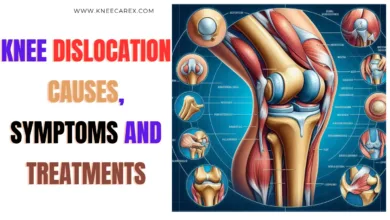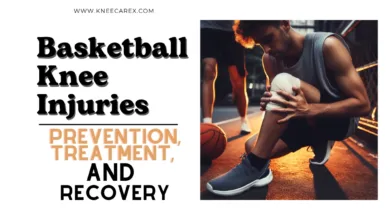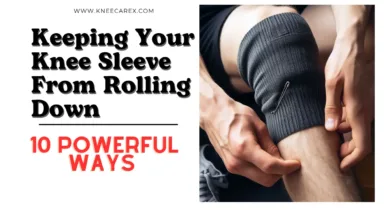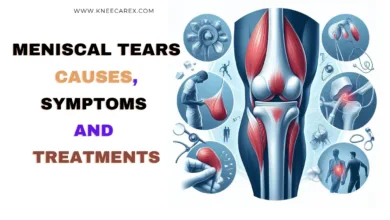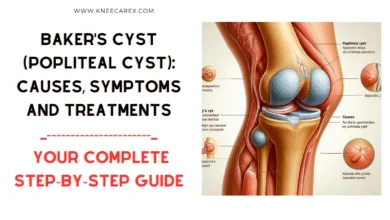The Ultimate Guide to Knee Pain After Basketball: Causes, Treatment, and Prevention
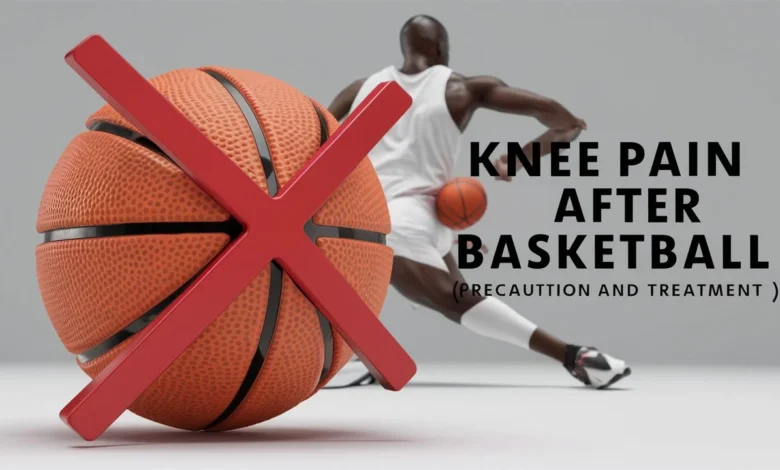
I’m delighted to introduce our blog dedicated to addressing knee pain after basketball. In this space, we will discuss the causes, preventive measures, and effective treatments for this common issue among basketball enthusiasts. We aim to provide you with valuable insights and practical solutions to help you overcome knee discomfort and continue enjoying your favourite sport without any hindrances. Stay tuned for informative content tailored to your needs.
How to Doctor Suggest Knee Pain in Basketball
Contents
- 1 Common Causes of Knee Pain in Basketball
- 2 Precautions and Preventive Measures
- 3 Treatment Options
- 4 FAQ’s
- 4.1 How can I prevent knee pain after playing basketball?
- 4.2 How do players in the NBA handle knee pain?
- 4.3 How does a jumper’s knee get fixed?
- 4.4 After playing basketball, should I ice my knee?
- 4.5 How can I treat my knee discomfort after a basketball game?
- 4.6 How can basketball knees be helped?
- 4.7 How do players in the NBA maintain their knees?
- 4.8 How can someone with damaged knees play basketball?
- 4.9 When I have knee pain, should I still play basketball?
- 4.10 What do players in the NBA wear on their knees?
- 4.11 How do sportsmen handle pain in their knees?
- 4.12 Does Jumper’s knee heal over time?
- 4.13 How soon can a jumper’s knee be healed?
- 4.14 In stage 1, what is a jumper’s knee?
- 4.15 Does heat help with a jumper’s knee?
- 4.16 Are knees iced by NBA players?
- 4.17 How should knee discomfort from basketball be treated?
- 4.18 After I hit my knee, should I ice it?
- 4.19 How do players in the NBA treat knee pain?
- 4.20 After playing basketball, do you have knee pain?
- 4.21 Ache in the legs after playing basketball?
- 4.22 After treating knee discomfort from basketball?
- 4.23 What causes knee pain following basketball?
- 4.24 Is it typical to have knee soreness after playing hoops?
- 4.25 How can knee discomfort from basketball be eliminated?
- 4.26 Knee pain following treatment for basketball?
- 4.27 Do knee pains follow basketball?
- 4.28 How can I treat my knee discomfort from basketball?
- 4.29 How come my knee hurts after playing basketball?
- 4.30 Ache in the left knee following a game of basketball?
- 4.31 How can knee pain from basketball be avoided?
- 4.32 Why does playing basketball hurt my knee?
- 4.33 Bad knee ache after playing basketball?
- 4.34 What should you do if a basketball injury causes a knee injury?
- 4.35 Why did playing basketball injure my knees?
- 4.36 Is there pain in your knees after playing basketball?
- 4.37 How should you treat a sore knee from playing basketball?
- 4.38 Reddit basketball and knee pain?
- 4.39 Why does playing basketball hurt my knee?
- 4.40 How can I avoid knee pain from basketball?
- 4.41 What causes my knee soreness after playing basketball?
- 4.42 And if you have knee pain, should you still play basketball?
- 4.43 But why do basketball players experience knee discomfort more frequently?
- 4.44 How can I avoid knee injuries from basketball?
- 4.45 How can I play basketball well and avoid knee injuries?
- 4.46 How can I enjoy the game and avoid knee injuries?
- 4.47 After playing basketball, what can you do to relieve knee pain?
- 4.48 What do knee injuries in basketball mean?
- 4.49 Which basketball knee injuries are the most frequent?
- 4.50 What steps can we take to help you continue playing basketball even though you have knee pain?
- 4.51 Why do athletes who play basketball ice their knees?
- 5 Conclusion: Knee Pain After Basketball
Common Causes of Knee Pain in Basketball
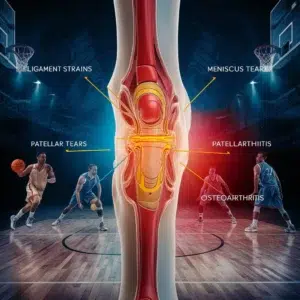
Player collisions can also cause direct impact or trauma, resulting in injuries such as fractures or contusions to the knees. A number of these knee issues can be avoided with appropriate warm-up, stretching, and conditioning exercises. See a doctor if your knee pain doesn’t go away, so you can treat the underlying issue and prevent complications down the road.
Patellar Tendinitis (Jumper’s Knee)
Patellar tendinitis, also known as jumper’s knee, This common overuse ailment affects the patellar tendon, which connects the shinbone (tibia) to the kneecap (patella). It usually occurs to athletes who play sports like basketball, volleyball, and track and field that require them to make quick direction changes or recurrent jumping. To give readers useful information to help them comprehend and properly manage patellar tendinitis, we will examine the causes, symptoms, diagnosis, and available treatments in this blog.
Anterior Cruciate Ligament (ACL) Injuries
Jumper’s knee, or patellar tendinitis, is a frequent condition. This is a common condition among athletes and anyone who participates in activities that require forceful knee extension or repetitive jumping. We will discuss the causes, signs, and practical treatments for patellar tendinitis in this blog, giving you the knowledge you need to effectively manage and heal from this problem.
Meniscus Tears
Whereby meniscus tears will be covered. A vital component of the knee joint, the meniscus serves as a stabilizer and shock absorber. Unfortunately, meniscus tears are frequent injuries caused by either abrupt twisting or strong impacts. We will explore the many kinds of meniscus rips in this blog, along with their symptoms, methods of diagnosis, and available treatments. We intend to arm you with useful information so that you may comprehend and treat this illness more quickly.
Knee Bursitis
In this blog, we’ll talk about knee bursitis, a disorder that affects the bursae, which are little sacs filled with fluid that surround the knee joint. We will examine the causes, signs, and possible treatments for this ailment, giving you important information to help you comprehend and effectively manage knee bursitis.
Precautions and Preventive Measures
We will look at some methods in this blog to reduce the possibility of illnesses and injuries that impact the muscles, joints, and bones.
Sustaining a healthy lifestyle is essential to avoiding orthopaedic problems. Frequent exercise helps strengthen bones and enhance general physical fitness when paired with a nutritious, well-balanced diet. Walking, swimming, or cycling are examples of low-impact exercises that can help relieve joint tension while enhancing cardiovascular health.
In both personal and professional contexts, good body mechanics and ergonomics are essential. Having the right workstation arrangement, lifting techniques, and posture can greatly lower the risk of musculoskeletal diseases. To avoid further difficulties, it is also critical to identify and treat any pre-existing diseases or risk factors, such as obesity, arthritis, or a history of injuries.
Prioritizing safety above all else should be the goal in life. Fractures, sprains, and other injuries can be avoided by wearing the proper protective gear when playing sports or engaging in other physical activities. Furthermore, minimizing potential risks in the home, such as loose carpets or dim lighting, may reduce the chance of falls, particularly for senior citizens.
Early detection and treatment of any musculoskeletal problems can be facilitated by routine examinations and consultations with an orthopaedic specialist. Timely intervention and strict commitment to rehabilitation protocols can expedite recuperation and avert the emergence of chronic ailments.
By adopting a proactive mindset and integrating these preventive methods into our everyday routines, we can significantly lessen the impact of orthopaedic issues and have a better quality of life.
Proper Warm-up and Cool-down
I am aware of how crucial appropriate warm-up and cool-down exercises are to preserving peak physical condition and avoiding accidents. We’ll talk about the advantages of including warm-up and cool-down exercises in your workout routine in this blog.
We’ll look at a variety of stretching methods and exercises that can help your heart, muscles, and joints get ready for exercise. We will also stress the need for cool-down exercises to speed up recovery, ease discomfort in the muscles, and improve general health.
You may improve your flexibility, increase your athletic performance, and reduce your chance of injury when exercising or participating in sports by adhering to the tips and advice in this blog. This blog will provide you with the information and techniques to guarantee a safe and effective warm-up and cool-down routine, regardless of whether you are a professional athlete, a recreational exerciser, or just someone looking to maintain an active lifestyle.
Strength Training
I want to talk about how crucial strength training is to preserving general musculoskeletal health. Frequent strength training activities can strengthen bones, increase muscular endurance and strength, and improve joint stability. This blog will cover topics such as the advantages of adding strength training to your exercise regimen, how to prevent injuries and customized programs for people with particular orthopaedic disorders or objectives. We will also talk about typical misconceptions and fallacies about strength training, especially for people who already have musculoskeletal problems. You will have a thorough grasp of how strength training can improve your general health and quality of life by the time you finish reading this article.
Proper Basketball Technique
The condition known as jumper’s knee, or patellar tendinitis, is a frequent overuse injury affecting the patellar tendon, which connects the patella (kneecap) to the shinbone (tibia). Athletes who participate in sports like track and field, basketball, and volleyball, which call for frequent jumping or abrupt direction changes, are typically affected. We will look at the causes, symptoms, diagnosis, and available therapies for patellar tendinitis in this blog post to provide readers with helpful information to help them understand and manage the condition appropriately.
Protective Equipment
The main focus of this blog will be the importance of protective gear for musculoskeletal health and injury prevention in a variety of contexts. We will discuss the various kinds of protective equipment that are available, including braces, splints, and orthotics, as well as the uses for each. We will also discuss how to use these protection gadgets properly and maintain them to make sure they last as long as possible.
The blog will also emphasize the importance of taking appropriate precautions, the possible repercussions of doing so, and how important they are in reducing the likelihood of orthopedic problems. Watch this space for a thought-provoking and educational conversation on this important subject.
Treatment Options
The main focus of this blog will be the importance of protective gear for musculoskeletal health and injury prevention in a variety of contexts. We will discuss the various kinds of protective equipment that are available, including braces, splints, and orthotics, as well as the uses for each. We will also discuss how to use these protection gadgets properly and maintain them to make sure they last as long as possible.
The blog will also emphasize the importance of taking appropriate precautions, the possible repercussions of doing so, and how important they are in reducing the likelihood of orthopedic problems. Watch this space for a thought-provoking and educational conversation on this important subject.
R.I.C.E. (Rest, Ice, Compression, Elevation)
I’ll talk about the R.I.C.E. (Rest, Ice, Compression, Elevation) approach to treating minor injuries. This method is highly recommended for treating sprains, strains, and mild injuries to the muscles, tendons, and ligaments.
To ensure that the wounded area heals without additional stress or pressure, rest is essential. Ice aids in pain, inflammation, and swelling reduction. Compression with wraps or elastic bandages can help to reduce swelling and provide support. Elevation helps to reduce swelling and promote adequate blood flow by keeping the damaged area above the heart’s level.
In this blog, we’ll go over the ins and outs of each R.I.C.E. technique component, as well as when and how to use it. We will also talk about the value of getting medical help for more serious injuries and the possible advantages of physical therapy or rehabilitation while recovering.
Physical Therapy
We’ll be discussing the value of physical therapy in this blog post as it relates to healing from operations or trauma affecting the bones, joints, and muscles. We will go over the many physical therapy exercises and methods that therapists use to assist patients in regaining their strength, flexibility, and range of motion. We will also discuss the advantages of physical therapy, including pain relief, increased range of motion, and improved quality of life. My mission is to inform patients about the critical role physical therapy plays in their recovery and motivate them to take an active role in their treatment under the supervision of trained specialists.
Medications
This blog will discuss the various kinds of drugs that are recommended to treat pain, lower inflammation, and speed up the healing process. We will examine the modes of action, dosages, possible adverse effects, and contraindications of routinely used pharmaceuticals, including corticosteroids, opioid analgesics, non-steroidal anti-inflammatory drugs (NSAIDs), and disease-modifying antirheumatic drugs (DMARDs). We will also go over the significance of appropriate medication administration and the function of drugs in addition to other forms of treatment, such as physical therapy and surgery.
Surgical Intervention (if necessary)
I’ll be talking about surgical interventions that might be required to treat different musculoskeletal conditions. We’ll talk about the types of surgical procedures, their indications, and the recovery process that goes along with them. We’ll also talk about the most recent developments in orthopaedic surgery and the possible risks and complications that come with these procedures. Ultimately, I want to give you a thorough understanding of when surgical intervention might be advised as well as what to anticipate before, during, and after the surgery.
FAQ’s
How can I prevent knee pain after playing basketball?
To lessen knee pain after basketball, try stretching before and after games, strengthening your leg muscles, wearing appropriate footwear, and maintaining a healthy weight.
How do players in the NBA handle knee pain?
NBA players use a mix of rest, ice therapy, compression, physical therapy, and, in cases of more severe injuries, surgery to treat their knee pain.
How does a jumper’s knee get fixed?
Jumper’s knee can be treated with rest, ice, compression, elevation, physical therapy, and, in extreme situations, surgery.
After playing basketball, should I ice my knee?
Iceing your knee after playing basketball indeed helps lessen discomfort and swelling. Use ice several times a day for 15 to 20 minutes at a time.
How can I treat my knee discomfort after a basketball game?
The RICE method (rest, ice, compression, and elevation) can help reduce knee pain following a game of basketball. Exercises for strengthening and maintaining good form are also crucial.
How can basketball knees be helped?
Stretching before and after games, strengthening leg muscles, wearing appropriate footwear, and thinking about using knee braces or supports can all help prevent basketball knee injuries.
How do players in the NBA maintain their knees?
NBA players use a combination of rest, physical therapy, appropriate training, and wearing supportive gear to take care of their knees.
How can someone with damaged knees play basketball?
It’s necessary to warm up properly, pace yourself, wear supporting equipment, and adjust your game when playing basketball if you have poor knees to prevent aggravating them.
When I have knee pain, should I still play basketball?
If you’re experiencing knee pain, it’s important to rest and give your knees time to recover. Playing more could make the injury worse.
What do players in the NBA wear on their knees?
NBA players frequently apply kinesiology tape, cold packs, and compression sleeves to their knees to treat discomfort and avoid further injuries.
How do sportsmen handle pain in their knees?
Rest, physical treatment, strengthening exercises, and occasionally surgery for more serious injuries are ways that athletes handle knee pain.
Does Jumper’s knee heal over time?
With rest, the right care, and therapy, Jumper’s knee can get well, but continuing care may be necessary to keep it from coming back.
How soon can a jumper’s knee be healed?
Quick relief from a jumper’s knee can be achieved with physical therapy, rest, ice, compression, and elevation. It’s crucial to give mending enough time, though.
In stage 1, what is a jumper’s knee?
After an exercise, the stage 1 jumper’s knee is characterized by minor pain. Conservative therapy, combined with rest, can help manage it.
Does heat help with a jumper’s knee?
While heat can aid in muscular relaxation, it is not recommended for an acute jumper’s knee. In general, ice works better to reduce pain and inflammation.
Are knees iced by NBA players?
Yes, to lessen pain and swelling, NBA players frequently ice their knees after practices or games.
How should knee discomfort from basketball be treated?
After playing basketball, knee pain can be managed with rest, ice, compression, elevation, and possibly physical therapy or other medical procedures.
After I hit my knee, should I ice it?
Yes, applying ice to your injured knee after impact can help lessen discomfort and swelling. Use ice several times a day for 15 to 20 minutes at a time.
How do players in the NBA treat knee pain?
NBA players use physical therapy, rest, ice, compression, elevation, and occasionally surgery for more serious injuries to treat knee discomfort.
After playing basketball, do you have knee pain?
Basketball-related knee pain might result from overuse, bad form, or underlying ailments. Ice packs, rest, and proper care can all help ease it.
Ache in the legs after playing basketball?
After basketball, muscle tension or exhaustion may cause leg pain. Stretching, rest, and adequate hydration can all help reduce it.
After treating knee discomfort from basketball?
After playing basketball, the following are some treatments for knee pain: rest, ice, compression, elevation, and strengthening activities. Form and proper footwear are also critical.
What causes knee pain following basketball?
Overuse, incorrect landing or pivoting, muscular imbalances, or underlying conditions like tendinitis or arthritis can all cause knee pain after playing basketball.
Is it typical to have knee soreness after playing hoops?
Given the high-impact nature of basketball, some knee soreness following a game may be expected. However, a medical professional should be consulted if the discomfort is severe or continuous.
How can knee discomfort from basketball be eliminated?
After playing basketball, rest, ice, compression, elevation, and strengthening activities can help relieve knee soreness. In cases of severe or ongoing pain, seek medical advice.
Knee pain following treatment for basketball?
After playing basketball, knee discomfort can be managed with rest, ice, compression, elevation, physical therapy, and, in more severe cases, surgery.
Do knee pains follow basketball?
Basketball-related knee pain might result from overuse, bad form, or underlying ailments. Pain relief can be achieved through appropriate care and preventative measures.
How can I treat my knee discomfort from basketball?
After playing basketball, knee discomfort can be effectively treated with rest, ice, compression, elevation, and strengthening activities. In cases of severe or ongoing pain, seek medical advice.
How come my knee hurts after playing basketball?
After playing basketball, knee pain may result from overuse, bad form, or underlying issues. Ice packs, rest, and proper care can all help ease it.
Ache in the left knee following a game of basketball?
After playing basketball, left knee pain may result from overuse, bad form, or underlying issues. Ice packs, rest, and proper care can all help ease it.
How can knee pain from basketball be avoided?
After playing basketball, avoid knee pain by warming up correctly, using appropriate footwear, strengthening your leg muscles, using excellent form, and paying attention to your body’s cues.
Why does playing basketball hurt my knee?
After playing basketball, knee pain may result from overuse, bad form, or underlying issues. Ice packs, rest, and proper care can all help ease it.
Bad knee ache after playing basketball?
Serious injuries, such as ligament rips or fractures, may cause severe knee discomfort after playing basketball. If you have extreme pain or swelling, get medical help.
What should you do if a basketball injury causes a knee injury?
Rest, ice, compression, and elevation can all be helpful if you injured your knee playing basketball. If discomfort persists, consult a medical professional for assessment and treatment.
Why did playing basketball injure my knees?
After playing basketball, knee pain may result from overuse, bad form, or underlying issues. Ice packs, rest, and proper care can all help ease it.
Is there pain in your knees after playing basketball?
After basketball practice, knee pain may result from overuse or bad form. Ice packs, rest, and proper care can all help ease it.
How should you treat a sore knee from playing basketball?
After playing basketball, rest, ice, compression, and elevation can help ease knee pain. If discomfort persists, consult a medical professional for assessment and treatment.
Reddit basketball and knee pain?
Reddit is a good place to talk about knee discomfort from basketball, but for individualized guidance and treatment, see a medical expert.
Why does playing basketball hurt my knee?
Basketball-related knee pain may result from overuse, bad form, or underlying ailments. Ice packs, rest, and proper care can all help ease it.
How can I avoid knee pain from basketball?
Following a basketball game, knee pain can be managed with rest, ice, compression, elevation, and strengthening activities. In cases of severe or ongoing pain, seek medical advice.
What causes my knee soreness after playing basketball?
After playing basketball, knee pain may result from overuse, bad form, or underlying issues. Ice packs, rest, and proper care can all help ease it.
And if you have knee pain, should you still play basketball?
If you’re experiencing knee pain, it’s important to rest and give your knees time to recover. Playing more could make the injury worse.
But why do basketball players experience knee discomfort more frequently?
Basketball players may experience knee pain as a result of the high-impact aspect of the game, which strains the knees. Muscle imbalances, overuse, and improper form can all contribute to this.
How can I avoid knee injuries from basketball?
Basketball knee injuries can be prevented by warming up correctly, using appropriate footwear, strengthening your leg muscles, using excellent form, and paying attention to your body’s cues.
How can I play basketball well and avoid knee injuries?
Avoid basketball knee injuries and have fun with the game by warming up correctly, using appropriate footwear, strengthening leg muscles, using the right form, and paying attention to your body’s cues.
How can I enjoy the game and avoid knee injuries?
Basketball players who want to avoid knee injuries should warm up properly, use appropriate footwear, strengthen their leg muscles, maintain proper form, and pay attention to their bodies cues.
After playing basketball, what can you do to relieve knee pain?
After playing basketball, knee pain can be managed with rest, ice, compression, elevation, and strengthening activities. In cases of severe or ongoing pain, seek medical advice.
What do knee injuries in basketball mean?
Ligament sprains, tendinitis, meniscus tears, and patellar injuries are a few examples of basketball-related knee ailments.
Which basketball knee injuries are the most frequent?
ACL tears, meniscus tears, MCL sprains, and patellar tendonitis are the most frequent knee injuries in basketball.
What steps can we take to help you continue playing basketball even though you have knee pain?
Rest, ice, compression, elevation, and strengthening exercises can help you continue playing basketball even if you are experiencing knee pain. In cases of severe or ongoing pain, seek medical advice.
Why do athletes who play basketball ice their knees?
Ice is used by basketball players to lessen pain and swelling in their knees, particularly following workouts or games.
Conclusion: Knee Pain After Basketball
In conclusion, we discussed knee pain after basketball, its precautions, and treatments. Basketball players frequently sustain knee injuries as a result of the high-impact nature of the game. On the other hand, many knee issues can be successfully avoided or treated with the right warm-up activities, enough rest, and treatment methods. The important things are to pay attention to your body, get medical help as soon as possible, and carefully adhere to the suggested recovery plan. If you put your knee health first, you can keep playing the game you love while reducing the risk of long-term problems.
